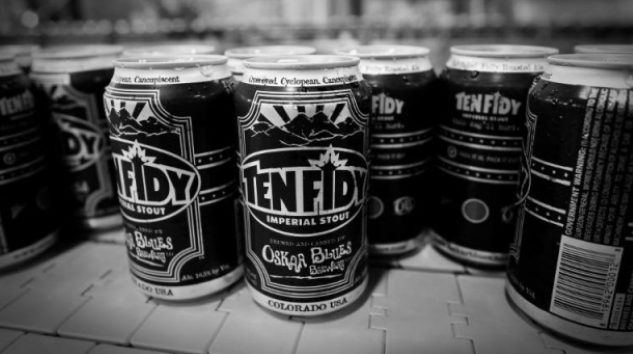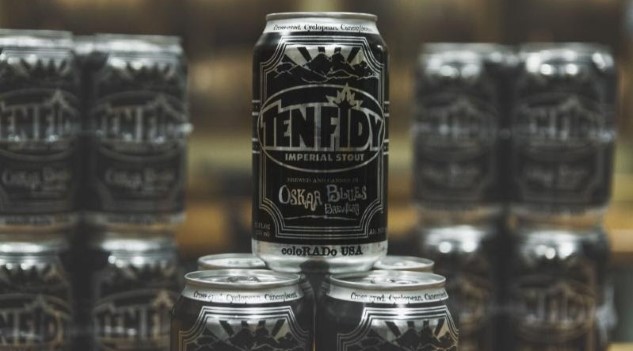Beers We Love: Oskar Blues Ten FIDY
Photos via Oskar Blues
In this Paste Drink series, we take a step back from the craft beer hype cycle to offer our enduring endearments to some of our favorite beers that have stood the test of time. These beers should be considered paragons of their respective styles, and just because they’re available year round (in most cases), that never makes us any less excited to crack one open. These are the Beers We Love, and they’ve earned our respect.
As a series, “Beers We Love” was created largely as a way to draw attention to “unsung heroes” of the craft beer industry. Most of these essays are dedicated to year-round beers, or offerings that have been around for 20 years or more. They’re the pale ales you remember fondly from your earliest craft beer memories; the ESBs you drank at the old pub that closed five years back to little fanfare; the non-adjunct porters that first taught you the value of “dark beer.” That kind of thing.
In comparison with those sorts of beers, it’s a little bit harder to argue that something such as Oskar Blues Ten FIDY could ever be considered “unsung.” This is a beloved imperial stout, no doubt about it, and likely one that has turned almost as many people onto the style as something such as North Coast’s Old Rasputin, which is often mentioned in the same company. We’re by no means alone in our love of it.
But here’s the thing—as we’ve been considering in a few ways lately, it can often feel like the world of imperial stout, and stout as a whole, has become choked by adjunct-laden beers that are desperate to generate hype and attention for their breweries in a slowing and overcrowded marketplace. In the course of these sugary, adjunct-laden pastry stouts coming into the vogue and dominating the hype cycle via hotly contested limited releases, they’ve increasingly pushed non-adjunct stouts—even beloved ones like Ten FIDY—out of the everyday conversation.
You can see this evolution in Ten FIDY’s own marketing language, which calls it “the ultimate celebration of dark malts and boundary-stretching beer” on the Oskar Blues website. The “dark malts” bit you can still say holds true today, but thinking of a 10.5 percent ABV, non-adjunct imperial stout as “the ultimate boundary-stretching beer”? That almost seems quaint now, in an era when the tip-top of Beer Advocate and Untappd rankings are almost entirely dominated by 12-15 percent ABV, barrel-aged monsters with multiple adjuncts in them. Only one type of imperial stout is allowed to hold the highest ranking on sites like this in 2019, and it’s not stuff in the mold of Ten FIDY. In fact, on the entire top 100 American imperial stouts on BeerAdvocate, I count exactly one that might have neither barrel-aging or adjuncts. Its ABV: 16 percent. Sounds about right.
But would we ever dream of compiling a list of our 100 favorite imperial stouts that didn’t include Oskar Blues Ten FIDY? There’s not a chance in hell. This beer is too good for that. So let’s talk about what makes this classic imperial stout so wonderful.
Why We Love It
There’s something incredible about the clarity of intent in Ten FIDY, a beer that was trailblazing as one of the first widely available imperial stouts you could find in a can, in an age when most breweries were putting their “special” stout releases into 22 oz. bottles. That’s clarity of intent and not visual clarity, naturally—this stuff pours motor oil black, with a thickness you can somehow see in the glass before you ever raise it to your lips. It looks like you could eat it with a spoon.
 Even the can evokes the absence of light.
Even the can evokes the absence of light.
What is that intent? To deliver an imperial stout that is assertive, pure and focused, while still allowing some room for subtlety in the wings. It gives you everything you’d expect to taste in a superlative Russian imperial stout, but then modifies them with small (but important) flourishes.
On the nose, Ten FIDY presents like a classic Russian imperial stout, of the sort that first came to prominence in the U.K., but amps up its intensity in a way that is distinctly American. Burnt, ashy roast is the signature note that most anyone would call out first, followed by fudgy chocolate intensity, toasted nuttiness, caramel and a bit of almost grainy, cereal character. The roast evokes coffee throughout, but in more way than one—the roasted nuts and cocoa make one think of a classic Colombian Supremo, while the wisps of smoke evoke a far darker, oilier French roast. Somehow, Ten FIDY does both at once, finishing on the nose with a surprising evocation of dark fruit—something we perceive much more prominently after taking a sip.
 None more black.
None more black.